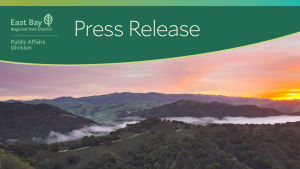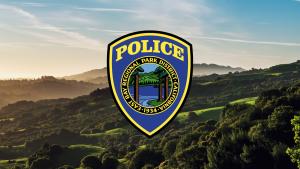Strategic Choices – How the Park District Makes Careful Decisions for Wildfire Protection
Park visitors and neighbors often inquire about how the Park District manages its resources to protect communities from wildfire. Budgets are always a constraint, necessitating careful, data-driven plans and prioritization. Here are key factors that the Park District considers on both a long-term and daily basis.

History
Large fires historically have occurred every 10 to 20 years. Of all the fires in the East Bay, the 1991 Oakland-Berkeley Hills Fire at the Caldecott Tunnel has been the most devastating. The 1,600-acre fire claimed 25 lives, destroyed 2,900 homes, and caused damages in excess of $1 billion.
Within a two-mile radius of the Caldecott Tunnel, 15 major fires have burned since the first fire documented in 1923. During the 75 year period between 1923 and 1998, eleven Diablo wind fires alone burned 9,840 acres, destroyed 3,542 homes, and took 26 lives, with over 2 billion dollars in financial losses. When mapped, it becomes apparent that the fires often reoccur in the same general areas and under similar environmental conditions.
Terrain, Ecology, and People
Over time, densely growing non-native grasses, pines, cypress, and eucalyptus trees have invaded the East Bay; thereby, increasing the fire fuel. Park District crews work throughout the year to remove hazardous vegetation. Strategic thinning of forests to create shaded fuel breaks allows more fire-resistant native species such as oaks, bays, and willows to grow.
As the population of the East Bay has expanded, urban development has moved into the wildland spaces. Houses nestled in among mature trees, brush, and other vegetation have become fuels themselves. Wildfire protection efforts must address many factors, including reducing risk in the wildland-urban interface areas, maintaining and enhancing plant and wildlife habitats, and preserving aesthetic landscapes.
Climate Change and Weather
The warming climate is increasing the risk of catastrophic fires. Ten of the most destructive fires in California history have occurred in the past four years, and a year-round fire season is now the ‘new normal’ in our state.
The East Bay’s worst fire weather is created by the late summer/early fall Diablo Winds. These strong, hot, and dry winds sweep through the Bay Area from the northeast and increase the likelihood of a fire by lowering relative humidity and drying out local vegetation.
Ten Remote Automated Weather Stations (RAWS) monitor the weather and provide data for Alameda and Contra Costa counties. Four of these stations are monitored by the Park District; six by other agencies. They supply real-time data about temperatures, dew point, humidity, wind speed, wind direction, precipitation, and more. Fire managers use the data to track weather and predict fire dangers—allowing for public fire-danger notices and the strategic placing of firefighting resources and personnel.
Key Takeaway
Assessing wildfire danger has advanced in recent years to a sophisticated science. The Park District relies on this science to make informed decisions about staffing, operations, restrictions, and suppression efforts. East Bay residents and park visitors can help by being aware of fire safety.
The East Bay Regional Park District is the largest regional park system in the nation, comprising 73 parks, 55 miles of shoreline, and 1,250 miles of trails for hiking, biking, horseback riding, and nature learning. The Park District receives more than 25 million visits annually throughout Alameda and Contra Costa counties in the San Francisco Bay Area.
Dave Mason, Public Information Supervisor
(925) 482-7078
dmason@ebparks.org






